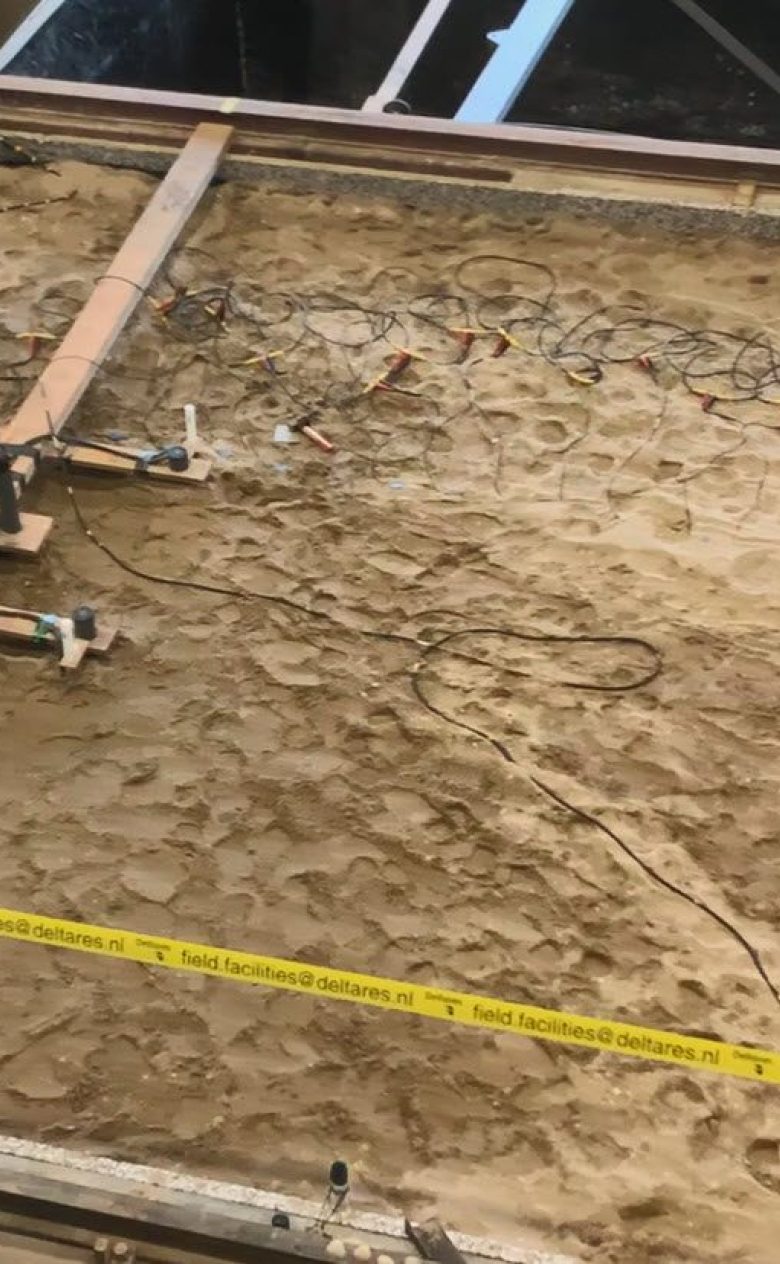Testing monitoring techniques for underground high temperature storage
A spatial image showing heat distribution is needed to establish a clearer picture of the efficiency of underground high temperature storage (60-90°C).

Tests are being conducted in the Deltares Water-Soil Flume with various measuring techniques to monitor the heat distribution of High temperature aquifer thermal energy storage (HTATES) in the subsurface. This will further the optimal use of heat production from sustainable heat sources. Heat suppliers and operators of heat distribution networks can use this knowledge to optimise heat production. In addition, municipal and provincial authorities can draw on the results to develop monitoring requirements for HTATES operators. The tests are part of the WarmingUP project, which is developing applied knowledge to make collective heating systems reliable, sustainable and affordable for the heating transition.
Optimising HTATES systems with monitoring
Monitoring temperature storage is important to extract as much heat as possible from the system and to determine the effects on the subsurface. Water fed with heat from sustainable heat sources such as geothermal energy and residual heat from industry is often between 60 and 90°C. This heat is sent through an injection well to a ‘storage aquifer’ at a depth of between 200 and 500 metres. The storage conditions are site-specific and they influence the performance of the HTATES system. The HTATES system can be regulated better when there is an accurate description of the subsurface structure and groundwater. Johan Valstar, a geohydrologist at Deltares: “The high temperature can result in a change in the density of the groundwater, for example. The groundwater in the storage aquifer will ‘float’ because it is lighter than the groundwater at the original temperature. That affects the recovery efficiency.” Drilling to a depth of between 200 and 500 metres to install monitoring wells is expensive. The aim of the study in the Water-Soil flume is to find out whether it is possible to establish a spatial picture of heat distribution from the extraction and injection wells and a single monitoring well.
Testing existing monitoring techniques for a new application
Existing measuring techniques are tested in a controlled lab set-up. These measurement techniques use the difference in electrical resistivity (Electrical Resistivity Tomography: ERT) and the difference in the speed of sound (Acoustic Tomography: AT) in the warmer groundwater. A sand layer of 7.0 m x 5.5 m x 2.4 m has been built up in the Water-Soil flume, and sealed of1f with an ‘artificial’ clay layer. Hot water at 70°C is injected through an injection well and extracted a few metres away. The ERT and the AT monitor the heat distribution in the sand layer at a number of points in time. Fibre-optic measurements and pressure measurements with geophones are used to validate the ERT and AT methods and determine how accurate they are. These data can be used to produce a good estimate of the temperature distribution in the subsurface. This is needed to use high-temperature underground storage on a large scale in combination with heat networks.
The results will be available in the course of 2022.

